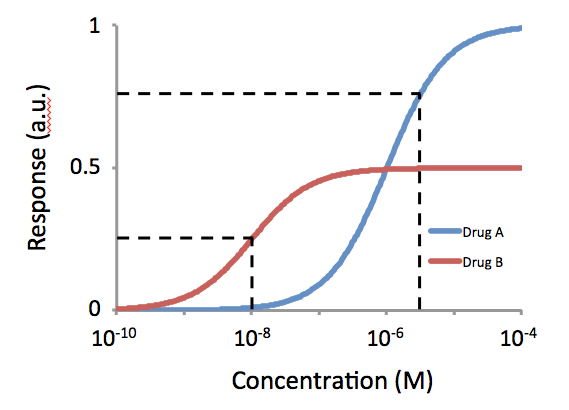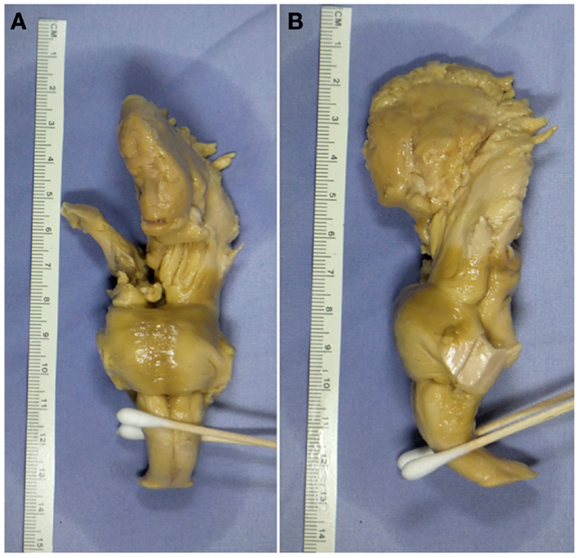|
Methylenedioxyphenylpropylaminopentane
1-(3,4-Methylenedioxyphenyl)-2-propylaminopentane (MPAP), also known as 3,4-methylenedioxy-α,''N''-dipropylphenethylamine, ''N''-propyl-1,3-benzodioxolylpentanamine (PDBP), or propyl-K, is a monoaminergic activity enhancer (MAE) of the phenethylamine, amphetamine, and α-propylphenethylamine families that is closely related to phenylpropylaminopentane (PPAP). It is an analogue of PPAP and benzofuranylpropylaminopentane (BPAP) with a benzodioxole ring instead of a phenyl or benzofuran ring, respectively. MAEs are agents that enhance the action potential-mediated release of monoamine neurotransmitters. MPAP is a MAE of serotonin, norepinephrine, and dopamine, all with similar potency. This is similar to BPAP, but is in contrast to PPAP and selegiline, which act exclusively as catecholaminergic activity enhancers (CAEs) and do not enhance serotonin. Like PPAP and BPAP, but in contrast to amphetamines, MPAP has no classical monoamine releasing agent actions. MPAP has compar ... [...More Info...] [...Related Items...] OR: [Wikipedia] [Google] [Baidu] |
Monoaminergic Activity Enhancer
Monoaminergic activity enhancers (MAE), also known as catecholaminergic/serotonergic activity enhancers (CAE/SAE), are a class of drugs that enhance the action potential-evoked release of monoamine neurotransmitters in the nervous system. MAEs are distinct from monoamine releasing agents (MRAs) like amphetamine and fenfluramine in that they do not induce the release of monoamines from synaptic vesicles but rather potentiate only nerve impulse propagation-mediated monoamine release. That is, MAEs increase the amounts of monoamine neurotransmitters released by neurons per electrical impulse. MAEs have been shown to significantly enhance nerve impulse-mediated dopamine release in the striatum, substantia nigra, and olfactory tubercle; norepinephrine release from the locus coeruleus; and/or serotonin release from the raphe nucleus in rodent studies. Some MAEs are selective for effects on some of these neurotransmitters but not on others. The maximal impacts of MAEs on brain monoam ... [...More Info...] [...Related Items...] OR: [Wikipedia] [Google] [Baidu] |
Phenylpropylaminopentane
1-Phenyl-2-propylaminopentane (PPAP), also known as α,''N''-dipropylphenethylamine (DPPEA) and by the developmental code name MK-306, is an experimental drug related to selegiline which acts as a catecholaminergic activity enhancer (CAE). PPAP is a CAE and enhances the nerve impulse propagation-mediated release of norepinephrine and dopamine. It produces psychostimulant-like effects in animals. The drug is a phenethylamine and amphetamine derivative and was derived from selegiline. PPAP was first described in the literature in 1988 and in the first major paper in 1992. It led to the development of the improved monoaminergic activity enhancer (MAE) benzofuranylpropylaminopentane (BPAP) in 1999. PPAP was a reference compound for studying the MAE system for many years. However, it was superseded by BPAP, which is more potent, selective, and also enhances serotonin. There has been interest in PPAP for potential clinical use in humans, including in the treatment of depression, ... [...More Info...] [...Related Items...] OR: [Wikipedia] [Google] [Baidu] |
Catecholaminergic Activity Enhancer
Monoaminergic activity enhancers (MAE), also known as catecholaminergic/serotonergic activity enhancers (CAE/SAE), are a class of drugs that enhance the action potential-evoked release of monoamine neurotransmitters in the nervous system. MAEs are distinct from monoamine releasing agents (MRAs) like amphetamine and fenfluramine in that they do not induce the release of monoamines from synaptic vesicles but rather potentiate only nerve impulse propagation-mediated monoamine release. That is, MAEs increase the amounts of monoamine neurotransmitters released by neurons per electrical impulse. MAEs have been shown to significantly enhance nerve impulse-mediated dopamine release in the striatum, substantia nigra, and olfactory tubercle; norepinephrine release from the locus coeruleus; and/or serotonin release from the raphe nucleus in rodent studies. Some MAEs are selective for effects on some of these neurotransmitters but not on others. The maximal impacts of MAEs on brain monoami ... [...More Info...] [...Related Items...] OR: [Wikipedia] [Google] [Baidu] |
Benzofuranylpropylaminopentane
(–)-Benzofuranylpropylaminopentane (BPAP; developmental code name FPFS-1169) is an experimental drug related to selegiline which acts as a monoaminergic activity enhancer (MAE). It is orally active in animals. BPAP is a highly potent MAE and enhances the nerve impulse propagation-mediated release of serotonin, norepinephrine, and dopamine. At much higher concentrations, BPAP is also a monoamine reuptake inhibitor, specifically of dopamine and norepinephrine and to a much lesser extent of serotonin. BPAP produces psychostimulant-like effects in animals, with these effects mediated by its MAE actions. The drug is a substituted benzofuran derivative and tryptamine relative structurally related to phenylpropylaminopentane (PPAP). BPAP was first described in 1999. There has been interest in BPAP for potential clinical use in humans, including in the treatment of Parkinson's disease, Alzheimer's disease, and depression. There has also been interest in BPAP to help slow aging. ... [...More Info...] [...Related Items...] OR: [Wikipedia] [Google] [Baidu] |
Monoaminergic Activity Enhancer
Monoaminergic activity enhancers (MAE), also known as catecholaminergic/serotonergic activity enhancers (CAE/SAE), are a class of drugs that enhance the action potential-evoked release of monoamine neurotransmitters in the nervous system. MAEs are distinct from monoamine releasing agents (MRAs) like amphetamine and fenfluramine in that they do not induce the release of monoamines from synaptic vesicles but rather potentiate only nerve impulse propagation-mediated monoamine release. That is, MAEs increase the amounts of monoamine neurotransmitters released by neurons per electrical impulse. MAEs have been shown to significantly enhance nerve impulse-mediated dopamine release in the striatum, substantia nigra, and olfactory tubercle; norepinephrine release from the locus coeruleus; and/or serotonin release from the raphe nucleus in rodent studies. Some MAEs are selective for effects on some of these neurotransmitters but not on others. The maximal impacts of MAEs on brain monoam ... [...More Info...] [...Related Items...] OR: [Wikipedia] [Google] [Baidu] |
Shuttle Box
The conditioned avoidance response (CAR) test, also known as the active avoidance test, is an animal test used to identify drugs with antipsychotic-like effects. It is most commonly employed as a two-way active avoidance test with rodents. The test assesses the conditioned ability of an animal to avoid an unpleasant stimulus. Drugs that selectively suppress conditioned avoidance responses without affecting escape behavior are considered to have antipsychotic-like activity. Variations of the test, like testing for enhancement of avoidance and escape responses, have also been used to assess other drug effects, like pro-motivational and antidepressant-like effects. Dopamine D2 receptor antagonists, like most classical antipsychotics, are active in the CAR test once occupancy of the dopamine D2 receptor reaches around 70%. Dopamine D2 receptor partial agonists like aripiprazole are likewise active in the test. Serotonin 5-HT2A receptor antagonists can enhance suppression of co ... [...More Info...] [...Related Items...] OR: [Wikipedia] [Google] [Baidu] |
Tetrabenazine
Tetrabenazine is a drug for the symptomatic treatment of hyperkinetic movement disorders. It is sold under the brand names Nitoman and Xenazine among others. On August 15, 2008, the US Food and Drug Administration (FDA) approved the use of tetrabenazine to treat chorea associated with Huntington's disease. Although other drugs had been used "off-label", tetrabenazine was the first approved treatment for Huntington's disease in the United States. The compound has been known since the 1950s. Medical uses Tetrabenazine is used as a treatment, but not as a cure, for hyperkinetic disorders such as: * Huntington's disease – specifically, the chorea associated with it * Tourette syndrome and other tic disorders * Tardive dyskinesia, a serious and sometimes irreversible side effect of long-term use of many antipsychotics, mainly typical antipsychotics * Hemiballismus, spontaneous flinging limb movements due to contra-lateral subthalamic nucleus damage Tetrabenazine has been used ... [...More Info...] [...Related Items...] OR: [Wikipedia] [Google] [Baidu] |
Enantiomer
In chemistry, an enantiomer (Help:IPA/English, /ɪˈnænti.əmər, ɛ-, -oʊ-/ Help:Pronunciation respelling key, ''ih-NAN-tee-ə-mər''), also known as an optical isomer, antipode, or optical antipode, is one of a pair of molecular entities which are mirror images of each other and non-superposable. Enantiomer molecules are like right and left hands: one cannot be superposed onto the other without first being converted to its mirror image. It is solely a relationship of chirality (chemistry), chirality and the permanent three-dimensional relationships among molecules or other chemical structures: no amount of re-orientation of a molecule as a whole or conformational isomerism, conformational change converts one chemical into its enantiomer. Chemical structures with chirality rotate plane-polarized light. A mixture of equal amounts of each enantiomer, a ''racemic mixture'' or a ''racemate'', does not rotate light. Stereoisomers include both enantiomers and diastereomers. Diaste ... [...More Info...] [...Related Items...] OR: [Wikipedia] [Google] [Baidu] |
Potency (pharmacology)
In pharmacology, potency or biological potency is a measure of a drug's biological activity expressed in terms of the dose required to produce a pharmacological effect of given intensity. A highly potent drug (e.g., fentanyl, clonazepam, risperidone, benperidol, bumetanide) evokes a given response at low concentrations, while a drug of lower potency (e.g. morphine, alprazolam, ziprasidone, haloperidol, furosemide) evokes the same response only at higher concentrations. Higher potency does not necessarily mean greater effectiveness nor more side effects nor less side effects. Types of potency The International Union of Basic and Clinical Pharmacology (IUPHAR) has stated that "potency is an imprecise term that should always be further defined", and lists of types of potency as follows: Miscellaneous Lysergic acid diethylamide (LSD) is one of the most potent psychoactive drug A psychoactive drug, psychopharmaceutical, mind-altering drug, consciousness-altering drug, ... [...More Info...] [...Related Items...] OR: [Wikipedia] [Google] [Baidu] |
In Vivo
Studies that are ''in vivo'' (Latin for "within the living"; often not italicized in English) are those in which the effects of various biological entities are tested on whole, living organisms or cells, usually animals, including humans, and plants, as opposed to a tissue extract or dead organism. Examples of investigations ''in vivo'' include: the pathogenesis of disease by comparing the effects of bacterial infection with the effects of purified bacterial toxins; the development of non-antibiotics, antiviral drugs, and new drugs generally; and new surgical procedures. Consequently, animal testing and clinical trials are major elements of ''in vivo'' research. ''In vivo'' testing is often employed over ''in vitro'' because it is better suited for observing the overall effects of an experiment on a living subject. In drug discovery, for example, verification of efficacy ''in vivo'' is crucial, because ''in vitro'' assays can sometimes yield misleading results with drug c ... [...More Info...] [...Related Items...] OR: [Wikipedia] [Google] [Baidu] |
Ex Vivo
refers to biological studies involving tissues, organs, or cells maintained outside their native organism under controlled laboratory conditions. By carefully managing factors such as temperature, oxygenation, nutrient delivery, and perfusing a nutrient solution through the tissue's vasculature, researchers sustain function long enough to conduct experiments that would be difficult or unethical in a living body. ''Exvivo'' models occupy a middle ground between '' in vitro'' () models, which typically use isolated cells, and '' in vivo'' () studies conducted inside living organisms, offering both experimental control and physiological relevance. ''Ex vivo'' platforms support pharmacologic screening, toxicology testing, transplant evaluation, developmental biology, and investigations of disease-mechanism research across medicine and biology, from cardiology and neuroscience to dermatology and orthopedics. Because they often use human tissues obtained from clinical ... [...More Info...] [...Related Items...] OR: [Wikipedia] [Google] [Baidu] |
Brain Stem
The brainstem (or brain stem) is the posterior stalk-like part of the brain that connects the cerebrum with the spinal cord. In the human brain the brainstem is composed of the midbrain, the pons, and the medulla oblongata. The midbrain is continuous with the thalamus of the diencephalon through the tentorial notch, and sometimes the diencephalon is included in the brainstem. The brainstem is very small, making up around only 2.6 percent of the brain's total weight. It has the critical roles of regulating heart and respiratory function, helping to control heart rate and breathing rate. It also provides the main motor and sensory nerve supply to the face and neck via the cranial nerves. Ten pairs of cranial nerves come from the brainstem. Other roles include the regulation of the central nervous system and the body's sleep cycle. It is also of prime importance in the conveyance of motor and sensory pathways from the rest of the brain to the body, and from the body back ... [...More Info...] [...Related Items...] OR: [Wikipedia] [Google] [Baidu] |


